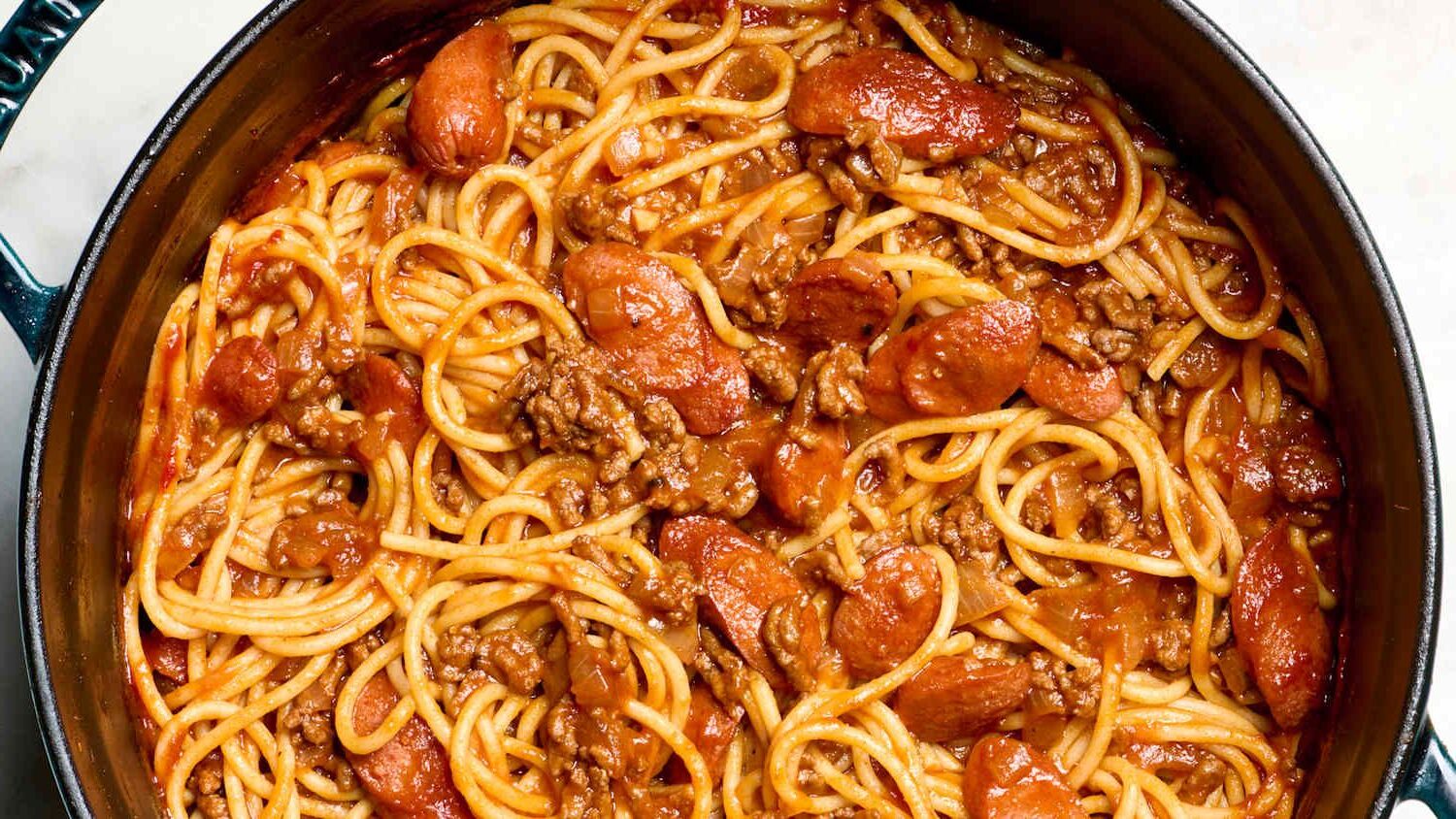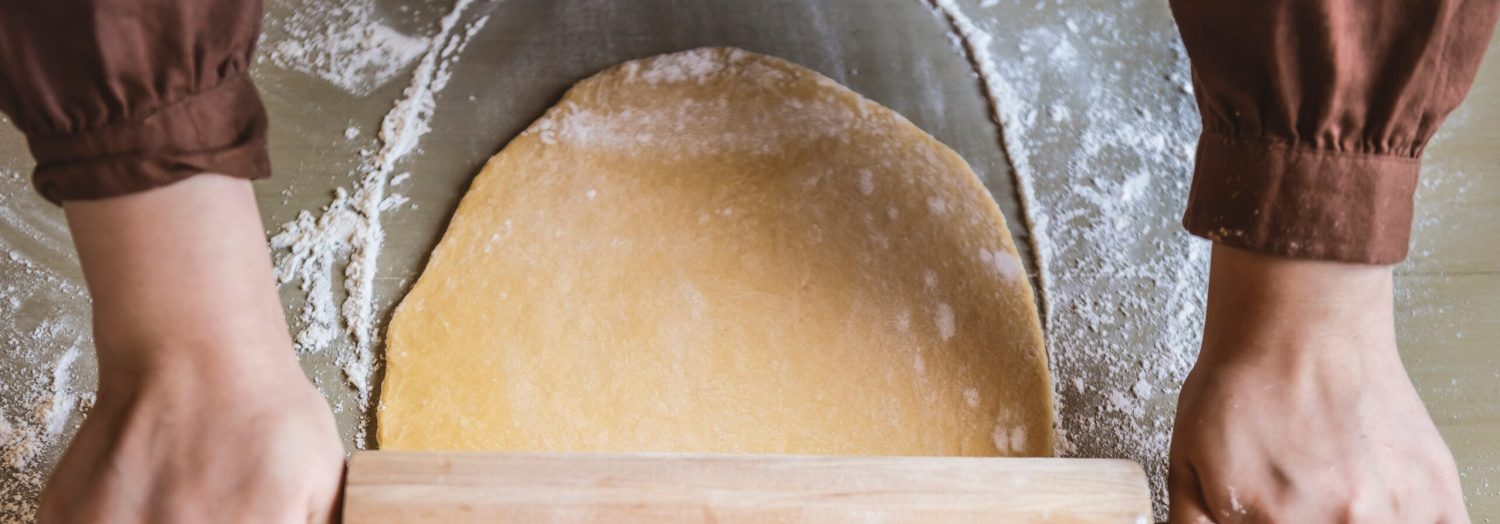This classic spaghetti recipe is a simple yet delicious dish that can be whipped up in no time. Perfect for a quick weeknight dinner or a comforting meal, it combines the rich flavors of tomato sauce with aromatic herbs and a touch of parmesan cheese.
Most of the ingredients in this recipe are common pantry staples. However, if you don't usually keep dried basil or dried oregano on hand, you might need to pick these up at the supermarket. These herbs are essential for adding depth and flavor to the sauce.

Ingredients For Spaghetti Recipe
Spaghetti: A type of pasta made from durum wheat, perfect for soaking up the sauce.
Olive oil: Used for sautéing the garlic and adding a rich flavor to the dish.
Garlic: Adds a fragrant and savory note to the sauce.
Tomato sauce: The base of the sauce, providing a rich and tangy flavor.
Salt: Enhances the overall flavor of the dish.
Black pepper: Adds a bit of heat and depth to the sauce.
Dried basil: Adds a sweet and slightly peppery flavor to the sauce.
Dried oregano: Provides a robust and earthy flavor to the sauce.
Parmesan cheese: Adds a salty and nutty finish to the dish.
Technique Tip for This Recipe
When sautéing the garlic in olive oil, be sure to keep the heat at medium and stir constantly to avoid burning. Burnt garlic can impart a bitter taste to your sauce. Instead, aim for a light golden color, which will enhance the overall flavor of your spaghetti dish.
Suggested Side Dishes
Alternative Ingredients
spaghetti - Substitute with zucchini noodles: Zucchini noodles are a low-carb alternative that still provide a similar texture.
spaghetti - Substitute with whole wheat pasta: Whole wheat pasta offers more fiber and nutrients compared to regular spaghetti.
olive oil - Substitute with avocado oil: Avocado oil has a similar smoke point and a neutral flavor, making it a good substitute.
olive oil - Substitute with coconut oil: Coconut oil can be used for its slightly sweet flavor and similar cooking properties.
garlic - Substitute with shallots: Shallots provide a milder but still aromatic flavor that can complement the dish.
garlic - Substitute with garlic powder: Garlic powder can be used in place of fresh garlic for convenience, though the flavor will be slightly different.
tomato sauce - Substitute with crushed tomatoes: Crushed tomatoes can be used to create a similar sauce texture and flavor.
tomato sauce - Substitute with marinara sauce: Marinara sauce is a pre-seasoned tomato-based sauce that can replace plain tomato sauce.
salt - Substitute with soy sauce: Soy sauce can add a salty and umami flavor, though it will change the dish's profile slightly.
salt - Substitute with sea salt: Sea salt can be used as a direct replacement for table salt, offering a slightly different mineral content.
black pepper - Substitute with white pepper: White pepper provides a similar heat but with a slightly different flavor profile.
black pepper - Substitute with red pepper flakes: Red pepper flakes add heat and a bit of color, though they are spicier than black pepper.
dried basil - Substitute with fresh basil: Fresh basil can be used for a more vibrant flavor, though you may need to use more of it.
dried basil - Substitute with dried thyme: Dried thyme offers a different but complementary herbal flavor.
dried oregano - Substitute with dried marjoram: Dried marjoram has a similar flavor profile to oregano and can be used as a substitute.
dried oregano - Substitute with Italian seasoning: Italian seasoning contains oregano and other herbs, making it a good replacement.
grated parmesan cheese - Substitute with pecorino romano: Pecorino Romano is a similar hard cheese with a slightly saltier and sharper flavor.
grated parmesan cheese - Substitute with nutritional yeast: Nutritional yeast provides a cheesy flavor and is a good vegan alternative.
Other Alternative Recipes Similar to This Dish
How to Store / Freeze This Dish
- Allow the spaghetti to cool to room temperature before storing. This helps prevent condensation, which can make the pasta soggy.
- Transfer the spaghetti and sauce into an airtight container. If you have a large batch, consider dividing it into smaller portions for easier reheating.
- Store the container in the refrigerator. The spaghetti will stay fresh for up to 3-4 days.
- For longer storage, place the spaghetti in a freezer-safe container or a heavy-duty freezer bag. Squeeze out as much air as possible to prevent freezer burn.
- Label the container with the date to keep track of its freshness. Frozen spaghetti can last up to 2 months.
- When ready to reheat, thaw the spaghetti in the refrigerator overnight if frozen. This ensures even reheating.
- Reheat the spaghetti on the stovetop over medium heat. Add a splash of olive oil or a bit of tomato sauce to keep it from drying out.
- Alternatively, you can reheat in the microwave. Place the spaghetti in a microwave-safe dish, cover with a microwave-safe lid or plastic wrap, and heat in 1-minute intervals, stirring in between until heated through.
- For a fresh twist, toss in some freshly grated parmesan cheese or a handful of chopped fresh basil before serving.
How to Reheat Leftovers
Stovetop Method:
- Place a skillet over medium heat.
- Add a splash of olive oil or a few tablespoons of water to the pan.
- Add the leftover spaghetti and sauce to the skillet.
- Stir occasionally to ensure even heating, cooking for about 5-7 minutes until warmed through.
Microwave Method:
- Place the spaghetti in a microwave-safe dish.
- Add a splash of water or olive oil to keep it from drying out.
- Cover the dish with a microwave-safe lid or plastic wrap, leaving a small vent.
- Microwave on medium power for 1-2 minutes, then stir.
- Continue microwaving in 30-second intervals, stirring in between, until heated through.
Oven Method:
- Preheat your oven to 350°F (175°C).
- Place the spaghetti in an oven-safe dish.
- Add a splash of tomato sauce or olive oil to keep it moist.
- Cover the dish with aluminum foil.
- Bake for about 15-20 minutes, or until heated through.
Boiling Water Method:
- Bring a pot of water to a boil.
- Place the leftover spaghetti in a heatproof colander.
- Dip the colander into the boiling water for about 30 seconds to 1 minute.
- Remove and let it drain, then serve immediately.
Steam Method:
- Set up a steamer or use a pot with a steaming basket.
- Add water to the pot and bring it to a simmer.
- Place the spaghetti in the steaming basket.
- Cover and steam for about 5-7 minutes, or until heated through.
Best Tools for This Recipe
Large pot: Used for boiling the spaghetti until it reaches the desired tenderness.
Colander: Essential for draining the cooked spaghetti after boiling.
Large skillet: Necessary for heating the olive oil and sautéing the garlic, as well as simmering the tomato sauce.
Wooden spoon: Ideal for stirring the sauce and ensuring the spaghetti is evenly coated.
Garlic press: Handy for mincing the garlic cloves quickly and efficiently.
Measuring spoons: Used to measure out the olive oil, salt, pepper, basil, and oregano accurately.
Grater: Needed for grating the parmesan cheese to top the finished dish.
Serving tongs: Useful for tossing the spaghetti in the sauce and serving it onto plates.
Serving plates: For presenting the finished spaghetti dish.
Ladle: Helpful for transferring the sauce from the skillet to the spaghetti if needed.
How to Save Time on Making This Dish
Prepare ingredients in advance: Mince the garlic and measure out the spices before you start cooking to streamline the process.
Use pre-made sauce: Opt for a high-quality tomato sauce to cut down on simmering time.
Cook pasta ahead: Boil the spaghetti earlier in the day and store it in the fridge. Reheat it in the sauce.
One-pot method: Cook the spaghetti directly in the sauce to save on cleanup and enhance flavor.
Batch cook: Make a larger batch of sauce and freeze portions for future quick meals.

Spaghetti Recipe
Ingredients
Main Ingredients
- 400 g Spaghetti
- 2 tablespoon Olive oil
- 3 cloves Garlic, minced
- 1 can Tomato sauce (400g)
- 1 teaspoon Salt
- 1 teaspoon Black pepper
- 1 teaspoon Dried basil
- 1 teaspoon Dried oregano
- ¼ cup Grated Parmesan cheese
Instructions
- 1. Cook spaghetti according to package instructions. Drain and set aside.
- 2. In a large skillet, heat olive oil over medium heat. Add minced garlic and sauté until fragrant.
- 3. Add tomato sauce, salt, pepper, basil, and oregano. Stir well and let it simmer for 10 minutes.
- 4. Add cooked spaghetti to the sauce. Toss to coat evenly.
- 5. Serve hot, topped with grated Parmesan cheese.
Nutritional Value
Keywords
Suggested Appetizers and Desserts for This Dish
More Amazing Recipes to Try 🙂
- Strawberry Cake Recipe50 Minutes
- Roasted Pork Chops Recipe30 Minutes
- Vietnamese Iced Coffee Recipe10 Minutes
- Ricotta Cheese Recipe40 Minutes
- Fried Rice with Ham Recipe25 Minutes
- Breakfast Sausage Recipe25 Minutes
- Beef Stir Fry Recipe25 Minutes
- Feijoada Brazilian Black Bean Stew Recipe2 Hours 30 Minutes


Leave a Reply